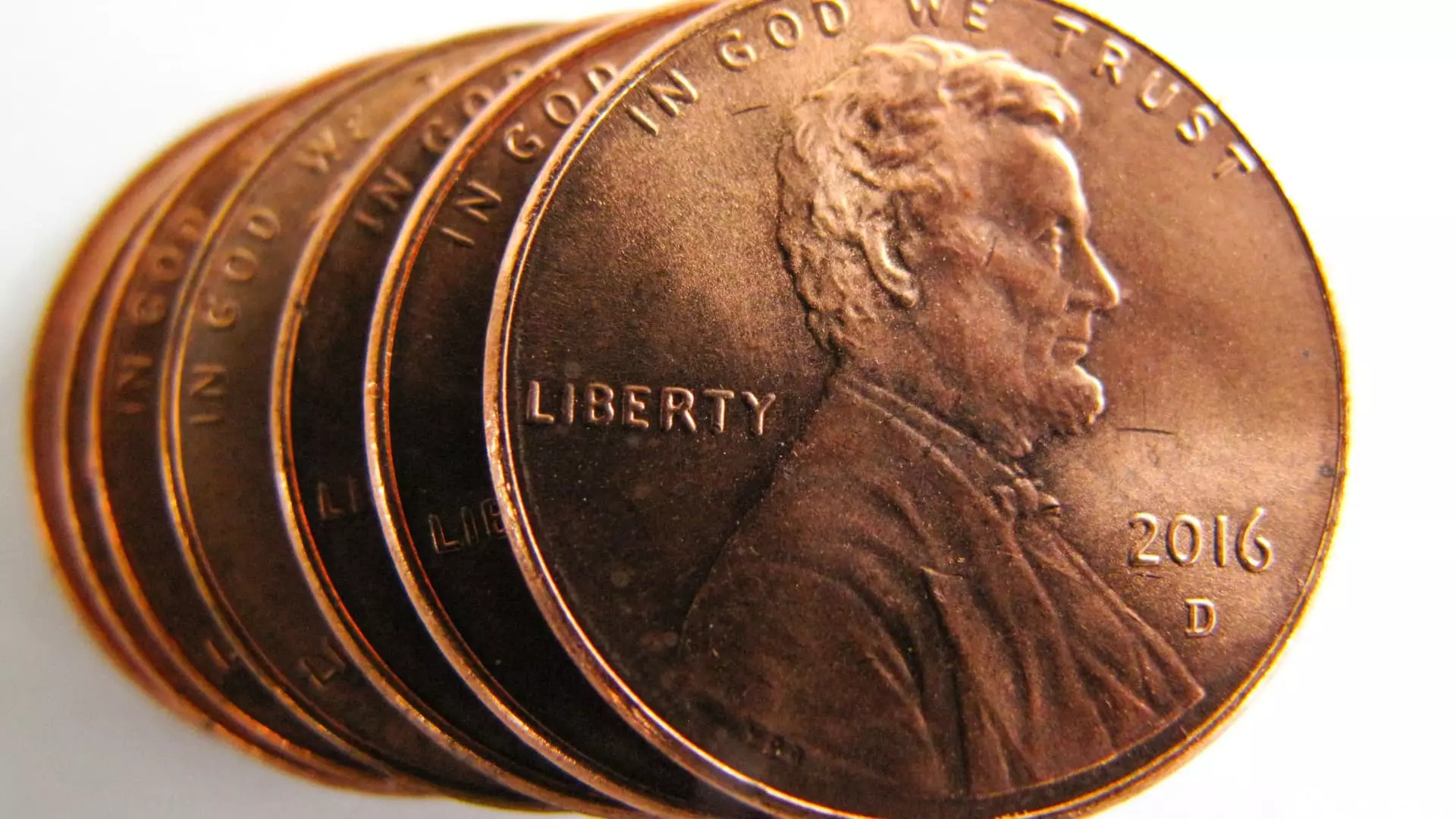The U.S. penny, long a fixture in American culture and economy, is nearing its end, and frankly, it’s about time. With the cost of making each cent surpassing its actual value—now at an astonishing 3.69 cents per penny—continuing production becomes less a matter of tradition and more an exercise in fiscal irresponsibility. The decision announced by the U.S. Treasury marks an overdue step toward rational economic management. In a world already burdened with a staggering $6.8 trillion government expenditure in 2024, saving $85 million may seem like dropping a bucket into the ocean. However, it symbolizes a broader shift towards more responsible resource allocation.
Time to Round Up: Adjusting to Economic Realities
The impending disappearance of the penny raises concerns about how businesses will adapt to the rounding requirement for prices. While some may lament the loss of this iconic coin, the fact is that retailers are already accustomed to strategies for dealing with pricing complications. Smoothing out prices to the nearest nickel might be a transition, but it’s hardly unmanageable. In fact, it might simplify transactions and make change less cumbersome, particularly for small purchases. America’s economic evolution requires a mindset that embraces change rather than clings to outdated practices, a principle that applies to both businesses and consumers.
Political Perspectives: A Rare Moment of Consensus
The introduction of the “Make Sense Not Cents Act” by Senator Mike Lee resonates across the political spectrum, albeit from the conservative side. It highlights a fascinating intersection where fiscal conservatism meets the practical liberal ideals of sustainability and efficiency. In an era where both sides often battle over spending, making the case to abolish a coin that quite literally costs more to produce than it’s worth should unite us in our collective desire to streamline government waste. The penny’s demise serves as a microcosm of broader fiscal philosophy that values efficacy over nostalgia.
Value Beyond Change: What About the Cultural Icon?
Culturally, the penny has been entrenched in American society, often collected as symbols of luck or sentiment. Yet, this doesn’t invalidate the reality of its diminishing value in practical terms. As society progresses, we must learn to recalibrate our affection for relics that no longer serve a purpose. A penny saved isn’t necessarily a penny earned when that penny literally loses value in the coining process. Nostalgia can’t outweigh the cold, hard facts that the penny has become a relic in a world increasingly driven by technological advancements in transactions—think digital wallets and cashless systems.
The Path Ahead: Fiscal Responsibility Is Key
As the last batch of blank pennies is stamped and prepared for circulation, it serves as a wake-up call—a moment for reflecting on how we allocate resources as a society. It may be time to let go of this mini-minting burden and pivot towards a future where our economic strategies align with reality. The penny’s departure is more than mere history; it’s an invitation for policymakers and citizens alike to engage in meaningful discussions about efficiency, intentional spending, and the evolving nature of currency in our fast-paced world. Therefore, saying goodbye to the penny is not just practical—it’s essential.


Leave a Reply